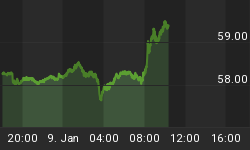Below is an extract from a commentary originally posted at www.speculative-investor.com on 27th November, 2008.
Few people seem to appreciate that the increasing instability within the financial world, as evidenced by price oscillations of progressively greater magnitude, is being driven by government attempts to manage the economy. Recent attempts to stimulate the economy and mitigate the financial crisis are classic examples of what we are talking about.
No reasonable person would be against economic stimulus schemes involving increased government spending if these schemes actually worked as advertised, or even if they only smoothed the transition from one growth period to the next. But as we've noted many times in the past, such schemes cause long-term damage by a) preventing or delaying necessary economic adjustments and b) reducing the quantity of real savings in the economy. It must always be kept in mind that the government does not have any real savings of its own, so it can only fund its various job-creating/economy-boosting packages by borrowing or plundering the private sector's savings. It then uses these savings in a sub-optimal way, usually by targeting spending with the primary goal of increasing its own popularity. It should also be noted that the less real savings the private sector has to begin with the more long-term damage will be done by an increase in government spending.
By preventing or delaying necessary adjustments and destroying real savings, the government's counter-cyclical economic policies lead to greater imbalances, slower real growth during the next economic upturn, and, quite likely, an even bigger bust in the future. Furthermore, the monetary inflation stemming from the attempts to counteract the bust will eventually cause boom conditions to emerge somewhere in the economy, which, in turn, will promote more mal-investment. But whereas busts are considered bad, inflation-fueled booms -- the natural precursors of busts -- are considered good. Therefore, monetary and fiscal policy will typically be framed with the aim of extending the boom for as long as possible, even though the longer the boom the greater the misallocation of real savings and the more devastating the ensuing bust.
The logical consequence of government intervention designed to prolong booms and curtail busts should be a long-term boom-bust cycle with increasingly large oscillations, which is exactly what the following chart of the Dow/Gold ratio shows is occurring (it's nice when the data meshes with the theory). Over the years we have referred to the long-term chart of the Dow/Gold ratio as the most important chart in the world for investors because it so clearly reveals the secular trends in the financial world.
Note that we've drawn a vertical line on the chart to mark the birth of the Federal Reserve. Not coincidentally, this line also marks the time at which Dow/Gold's long-term oscillations began to increase in magnitude. The connection is that once a central bank was created it became possible for credit to expand much more during the booms and for the government to spend much more during the busts.
On the chart we've also marked the point at which the last official link between the dollar and gold was severed. From this point forward there was no objective limit to the amount of monetary inflation, which goes a long way towards explaining why the oscillations have since become even bigger.
As an aside, based on the popular belief that Paul Volcker's actions as Chairman of the Fed ended the gold bull market of the 1970s some gold bulls are apparently concerned that Volcker's involvement with the incoming Obama administration will limit gold's upside potential. This is not a legitimate concern. The gold bull market of the 1970s ended in January of 1980, about 5 months after Volcker took the helm of the Fed. During this 5-month period the gold price rocketed upward in spectacular fashion, driving the Dow/Gold ratio down to around 1 and thus making gold more expensive relative to the US stock market than it had been at any time over the preceding 100 years. It was this dramatic over-valuation of gold relative to the stock market (and almost everything else) that ended the gold bull market, not the actions of Paul Volcker.

Chart Source: www sharelynx.com
We aren't offering a free trial subscription at this time, but free samples of our work (excerpts from our regular commentaries) can be viewed at: http://www.speculative-investor.com/new/freesamples.html.















